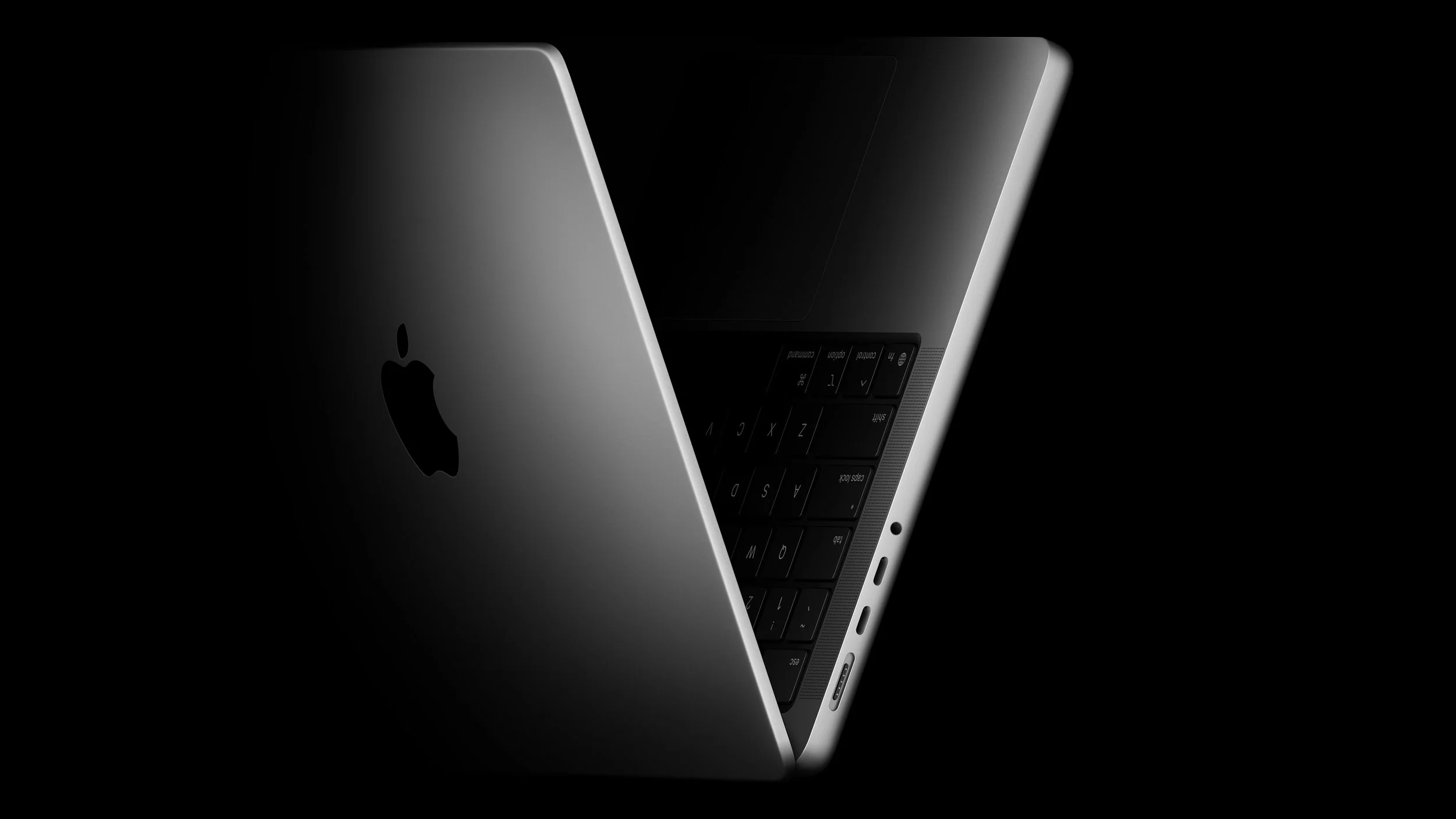MacBook Pro M5: Should Music Producers Upgrade to the Newer Model?

Apple’s latest MacBook Pro lineup is here, powered by the new M5 chip family — and naturally, music producers are wondering whether it's finally time to upgrade. The MacBook Pro has long been the go-to machine for creative professionals, and with every refresh, Apple promises more power, more efficiency, and more headroom for demanding workflows. But with the M-series already being remarkably strong since day one, the real question is: does the M5 generation meaningfully move the needle for music production? Or are you better off holding onto your M1/M2/M3 era machine, or saving money on a discounted M4 model? Apple also introduced updated MacBook Pro configurations with the M5 Pro and M5 Max chips, geared toward high-end users who need intense DSP power — think large-scale scoring, live electronic performance rigs, or heavy AI-powered sound design. These machines are clearly designed for professionals pushing their systems to the edge. But if you’re a producer working in Ableton, Logic, FL Studio, or Pro Tools, should you actually upgrade? Or do earlier Apple Silicon laptops still hold up just fine? Let’s break down what’s new, what matters for real-world audio production, and whether the MacBook Pro M5 is worth it for your studio setup.
Coming from an Intel Mac? The jump to M-series is still massive.
→ Compare the latest MacBook Pro prices
Disclosure: This site contains affiliate links. If you book or purchase through these links, I may earn a commission at no extra cost to you. This helps support the site and keeps my content free. As an Amazon Associate, I earn from qualifying purchases.
MacBook Pro M5 – What’s New?
Apple hasn’t drastically changed the chassis this time, keeping the same premium design and stunning Liquid Retina XDR display. Instead, the upgrades are inside — and they’re all about more efficiency, better sustained performance, and meaningful silicon improvements.
Here are the key upgrades:
M5 Pro and M5 Max Chips – Apple claims significant gains over the previous generation, particularly in multi-core performance and sustained loads. For music producers, these improvements matter most in dense sessions with CPU-intensive plugins, real-time synthesis, and large mixdowns.
Memory Up to 128GB (Model-Dependent) – While the baseline models offer 18GB/36GB unified memory, the higher-tier Max configurations support far more memory than the Air series. For huge orchestral templates, immersive audio, or massive Kontakt libraries, this matters.
Improved Neural Engine – Apple continues leaning into AI acceleration. This increasingly benefits tools like iZotope Ozone, Neural DSP, Sonible Smart plugins, and emerging AI mixing and mastering workflows.
Better Thermal Management – The Pro models still feature active cooling, giving the M5 chips more room to stretch their legs during long sessions. This is key for producers who run heavy sessions, live plugins, or multiple soft synths.
Faster SSD Performance – Load times for huge sample libraries and large DAW sessions see incremental improvements — another quiet advantage that adds up in real-world production.
The MacBook Pro remains the only portable Mac offering full-fat power, real cooling, and high RAM ceilings — advantages that matter for demanding audio creators.
→ Check MacBook Pro M5 configurations on Amazon
Performance for Music Production: Is It Enough?
The M-series has already proven itself as an incredible platform for music, and the M5 Pro/Max continues that climb. Even the base M-series laptops easily crush most real-world music workloads, so the question isn’t whether the M5 is “good enough” — it’s whether you’ll feel the jump.
DAW Performance
Logic Pro, Ableton, and FL Studio users will see smoother performance in dense sessions and slightly deeper plugin stacks before hitting limits. Complex sound design sessions, large-track productions, multichannel recording, and surround workflows benefit the most.
Apple cites noticeable performance gains vs M4/M3, but like every generation after M1, this is evolution, not revolution. If your current machine already feels fast, this won’t be night-and-day — unless you're coming from Intel or early M-series with lower RAM.
CPU vs RAM: What Actually Matters?
Just like video and 3D artists don’t always need the fastest GPU, music producers often benefit more from:
More RAM
Larger internal SSD
Better sustained performance
Quiet cooling while mixing
If you work with:
Large Kontakt libraries
Orchestral / cinematic instruments
Multiple soft synths (Diva, Serum, Falcon, Pigments)
Dozens of real-time FX chains
Dolby Atmos or immersive audio
…the RAM and cooling advantages of the Pro matter more than a pure chip upgrade alone.
Plugin-Heavy Sessions & AI Tools
Modern music workflows increasingly rely on intelligent processing — from smart EQ to AI mastering assistants. The M5 neural engine and sustained performance headroom help here, especially for post-processing and bounce times.
M1/M2/M3 can still handle most work, but the M5 Pro is clearly built for future-proofing.
So… Should You Upgrade?
Who Should Upgrade?
You’re coming from an Intel Mac — huge upgrade, do it.
You work with massive orchestral or film scoring templates.
You run heavy real-time synth sessions and CPU-hungry FX.
You need serious RAM headroom (36GB–128GB).
You rely on AI-powered mixing/mastering tools.
You want maximum laptop performance without going desktop.
Who Can Wait?
You already own an M2 or M3 Pro/Max MacBook Pro.
You mostly produce electronic music with moderate track counts.
Your current laptop never thermal throttles or chokes.
Your workflow is sample-light or loop-based.
You’d rather invest in SSDs, plugins, or monitors.
Older M-series machines are still fantastic — and now cheaper.
→ See refurbished MacBook Pros on Amazon
Final Thoughts: A Professional Laptop for Professional Workloads
The MacBook Pro M5 is the most powerful MacBook Pro yet and a rock-solid choice for serious music producers. Apple continues refining its already-dominant platform, providing more power and efficiency without compromising battery life or portability. For those running massive sessions or working in advanced production environments, the M5 Pro/Max models deliver meaningful upgrades.
If you're coming from an Intel machine, or you need big RAM and maximum headroom, this is an easy recommendation. But if you're already on an M-series Mac and not hitting limits, there’s no emergency — the M-chip lineup remains incredibly strong across generations.
For those who need true desktop-class performance in a portable machine, the M5 MacBook Pro continues to lead the pack.
Ready to upgrade?
Click to shop the latest MacBook Pro deals
You Might Also Like
The Best Lofi Plugins: All the VSTs You Need to Make Chill Hip Hop Beats
Output Arcade vs. Splice: Which One Should You Use?
The Best VST Synth Plugins for Trap Type Beats
What You Need to Start DJing: The Ultimate Beginner’s Guide
Photo credit: Apple / apple.com
Disclosure: This site contains affiliate links. If you book or purchase through these links, I may earn a commission at no extra cost to you. This helps support the site and keeps my content free. As an Amazon Associate, I earn from qualifying purchases.



